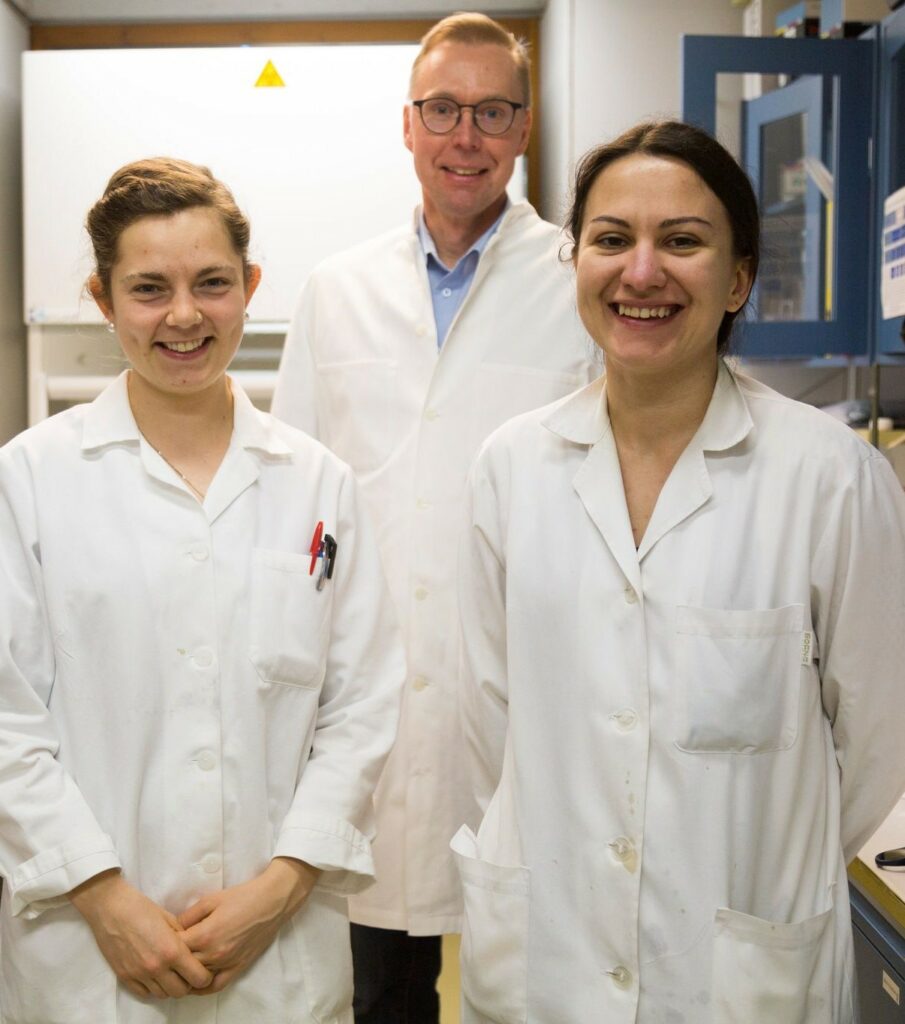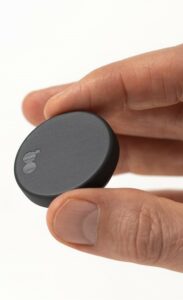18.6.2021
What if there was a way for diabetics to measure their blood glucose levels without a needle prick, for example through a sensor worn around the wrist. That reality is not far away. A report has been published on a new needle-free, faster and more efficient way of measuring and monitoring glucose levels via the skin. Johan Bobacka at Åbo Akademi University has a finger in the pie.
When a patient is diagnosed with or suspected of having an increased risk of developing diabetes, a future of needle pricks awaits to monitor the body’s glucose level. Blood tests are both effective and accurate, but the patient may experience them as painful, uncomfortable and troublesome.
Therefore, all over the world, research is in full swing to develop methods that can measure the body’s glucose level without needle pricks. The Finnish company GlucoModicum has delivered a solution that reads glucose levels via the body’s tissue fluid (dermal interstitial fluid) through a chemical sensor, without puncturing the skin. Johan Bobacka, professor of analytical chemistry at Åbo Akademi University, has been involved in this research.
Finnish research at the forefront
The story behind GlucoModicum begins with Edvard Haeggström, professor of physics at the University of Helsinki, who led a research project in which a method was developed to extract tissue fluid from the skin. The body’s tissue fluid has a similar glucose concentration to that of blood plasma and can provide a representative sample for glucose monitoring, as long as you can access the fluid. Doing so without a needle through the skin opens up great opportunities for research.

To take his method further, Haeggström needed the help of someone with expert knowledge in the field of chemical sensors. This is where Bobacka comes in.
“In 2018, one year after I joined the research effort, we founded the company GlucoModicum. The goal was to develop a portable sensor for glucose measurement where we could combine our areas of knowledge to develop an instrument that can measure the body’s glucose level without a prick. Today we have a team of about 20 selected experts in key areas of knowledge. Several people with connections to Åbo Akademi University are employed within the company, and we have been able to present research results that may change the lives of diabetics around the world,” says Bobacka.
The new research findings present a safe, effective and non-invasive sampling method. The results have been published in Scientific Reports, part of the scientific journal Nature, and are based on magnetohydrodynamics (MHD). This method of producing dermal interstitial fluid (tissue fluid) through the skin is both faster and 13 times more efficient than its predecessor, reverse iontophoresis, a technique that removes molecules from within the body using only electric current.

“The sensor is about the same size as a wristwatch and uses a magnetic field combined with a low electric current, which means that we get the sample very efficiently and in a completely painless manner. A small sample of a few microlitres is sufficient to register the glucose content. The sensor works with a wireless signal transmission that allows the patient to monitor their glucose values, for example, via a mobile phone. This method can help unleash the potential of needle-free glucose monitors with portable sensors for researchers all over the world.”
Offering the long-awaited solution
Bobacka’s mission within GlucoModicum is to act as a scientific advisor and help solve the technical problems that arise in the work with the sensor. So far, the clinical tests performed have gone well and given very promising results. As soon as the pandemic situation allows, further clinical trials will be performed.
“All devices for continuous glucose monitoring on the market at present rely on invasive sampling, i.e., needle pricks, and the market is screaming for needle-free alternatives. One of the more popular solutions today, for example, has a needle a few millimetres long that goes into the skin,” says Bobacka.
“Tests with needle pricks in the finger give very accurate answers, but the disadvantage is that very few want to prick themselves, regardless of whether it is a matter of a few times a week or up to 10 times a day. The sensor will be a solution that makes life easier not only for diabetics, but also for those at risk who need to monitor their values carefully. Access to needle-free, portable devices can even be crucial to both the prevention and treatment of diabetes.”
The sensor will be a solution that makes life easier not only for diabetics, but also for those at risk who need to monitor their values carefully.
When can we then expect that the sensor will be released on the market?
“Many pieces of the puzzle must fall into place before we’ll have a commercial product. If all goes according to plan, it could be out in two years, maybe less. But realistically, we can say within five years. As development progresses, the sensors will probably become smaller, perhaps so small that they fit in a ring around the finger. I believe that these findings may encourage researchers to review the use of tissue fluid as a test for non-invasive chemical sensing on the body, not only in the field of diabetes, but also more widely.”
Bobacka sees several areas in addition to health diagnostics where chemical sensors may be relevant in the future, for example, in sports.
“We can assume that marathon runners, for example, could benefit from sensors that indicate the body’s potassium and sodium levels. Chemical sensors could also be used to track lactate, i.e., lactic acid, and thus help optimize exercise. In the future, there may also be the possibility of having chemical sensors analyse the body’s cortisol, which has to do with stress. But that is the distant future. Before that, the sensor must be properly developed, and research at Åbo Akademi University can contribute to that.”
Diabetes – a common disease
Diabetes is a collective name for several diseases with the common denominator that the person who falls ill has a deficiency of the hormone insulin and consequently too much glucose, sugar, in the blood.
Diabetes is a result of there not being enough insulin—the hormone that releases sugar into the cells—or the cells becoming desensitized to the hormone.
Although, in general, we need to watch out for sugar, it is not only bad; it is also the body’s fuel that allows our muscles and our brain to function properly. The body’s own process of letting sugar into the cells turns on and off as needed. A healthy body can handle this without any problems, but when the body is no longer able to take care of the nutrition in the form of sugar that is in the blood, the risk of developing diabetes arises. In the long run, this damages the nervous and vascular systems and various organs.
About 460 million people worldwide suffer from diabetes. The disease is estimated to cost more than 800 billion euros a year in health care, making it an important factor in both public health and the economy. In addition to those who fall ill, it is estimated that around 374 million people worldwide have impaired glucose tolerance, a major risk factor for diabetes.
In type 1 diabetes, the body’s own insulin production has completely ceased; in type 2 diabetes, insulin production is partially maintained. Sometimes, type 2 diabetes does not show any symptoms at all, and it can therefore be difficult to detect the disease. Those who get symptoms often experience that they sneak up over a long period of time, usually in the form of fatigue, feeling poorly, being thirsty and needing to urinate often. Other forms of diabetes are gestational diabetes, a form of the disease that occurs during pregnancy when the cells in the body become less sensitive to insulin. Another variant is LADA, a form of type 1 diabetes, where the disease is slower and the symptoms are not so clear.
Source: diabetes.se, diabetes.fi.